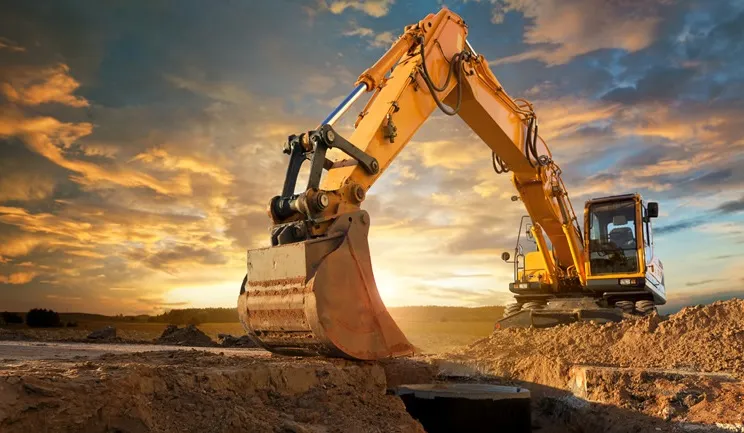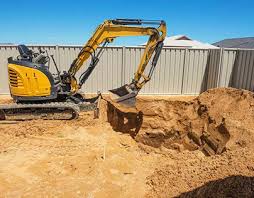Excavation projects are vital for a multitude of industries, from construction and infrastructure development to mining and archaeology. However, despite their significance, excavation sites can be hazardous environments if safety protocols are not strictly adhered to. Accidents in excavation projects can lead to serious injuries, fatalities, and costly delays. Therefore, establishing ground rules to ensure safety is paramount for the success of any excavation endeavor. In this blog post, we’ll explore essential ground rules that should be followed to maintain safety in excavation projects.
Conduct Comprehensive Risk Assessments
Before commencing any excavation project, it is imperative to conduct thorough risk assessments. This involves identifying potential hazards such as unstable soil, underground utilities, nearby structures, and adverse weather conditions. By understanding the risks involved, appropriate safety measures can be implemented to mitigate them effectively. Conducting comprehensive risk assessments is a crucial step in any excavation project. By thoroughly evaluating potential hazards and identifying risks associated with the excavation site, project managers can implement appropriate safety measures to protect workers and minimize the likelihood of accidents or costly delays. Factors such as unstable soil conditions, underground utilities, nearby structures, and environmental considerations must be carefully assessed to mitigate risks effectively.

Ensure Proper Training and Certification
In excavation projects, ensuring that all personnel involved possess proper training and certification is paramount to safety and efficiency. Operating heavy machinery and performing excavation tasks require specific skills and knowledge to minimize risks and prevent accidents. Prioritize hiring workers who have undergone comprehensive training programs and hold relevant certifications for operating excavation equipment and handling excavation-related tasks. Additionally, ongoing training and refresher courses should be provided to keep personnel updated on best practices, safety protocols, and industry regulations. By investing in proper training and certification for your excavation team, you not only enhance safety standards but also improve project productivity and quality while reducing the likelihood of costly errors or incidents.
Excavation Projects: Utilize Protective Equipment
Personal protective equipment (PPE) plays a crucial role in safeguarding workers on excavation sites. This includes items such as hard hats, steel-toed boots, high-visibility clothing, gloves, and respiratory protection. Workers should wear appropriate PPE at all times to reduce the risk of injury from falling debris, machinery accidents, or exposure to hazardous substances.
Implement Trenching Safety Measures
Trenching is a common aspect of many excavation projects, but it also presents significant hazards, particularly the risk of cave-ins. To ensure trenching safety, proper shoring, sloping, or shielding techniques should be employed to prevent soil collapse. Additionally, trenches should be inspected regularly by competent personnel to identify any signs of instability.
Mark and Locate Underground Utilities
One of the most critical steps in excavation safety is identifying and locating underground utilities such as gas pipelines, electrical cables, water mains, and telecommunications infrastructure. Accidental damage to these utilities can have severe consequences, including gas leaks, electrical shocks, or service outages. Employing techniques such as utility mapping, ground-penetrating radar, and hand excavation can help prevent costly and dangerous incidents. Incorporating advanced technology in construction practices enhances ground rules for ensuring safety in excavation projects, promoting efficiency and mitigating risks through real-time monitoring and precision equipment utilization.
Establish Clear Communication Channels
Effective communication is essential for coordinating activities and ensuring the safety of all personnel on an excavation site. Establishing clear communication channels between workers, supervisors, and other stakeholders facilitates the dissemination of safety information, instructions, and emergency procedures. Regular safety meetings should be held to discuss potential hazards, address concerns, and reinforce safety protocols.
Monitor Weather Conditions
Weather conditions can have a significant impact on excavation safety. Heavy rainfall can lead to soil erosion, increased risk of trench collapses, and slippery working conditions. Extreme temperatures can also affect worker productivity and increase the risk of heat-related illnesses. Monitoring weather forecasts and implementing appropriate measures, such as temporary coverings or suspending work during adverse conditions, helps mitigate these risks.
Conduct Regular Inspections and Audits
Conducting regular inspections and audits is crucial in excavation projects to ensure safety, compliance, and efficiency. These inspections should be carried out at various stages of the project, from pre-excavation planning to post-excavation completion. Inspections help identify potential hazards, such as unstable soil conditions, underground utilities, or environmental risks, allowing for timely mitigation measures. Additionally, audits assess adherence to regulatory requirements, contractual agreements, and industry best practices, helping to maintain project integrity and avoid costly delays or disputes. By prioritizing regular inspections and audits, project stakeholders can proactively address issues, promote accountability, and enhance overall project quality and success.
Conclusion
Safety should always be the top priority in excavation projects. By implementing the ground rules outlined above and fostering a culture of safety awareness and accountability, excavation contractors can minimize the risk of accidents, protect the well-being of their workers, and ensure the successful completion of projects. Remember, when it comes to excavation, following the ground rules can mean the difference between a successful project and a potential disaster.








Comments 1